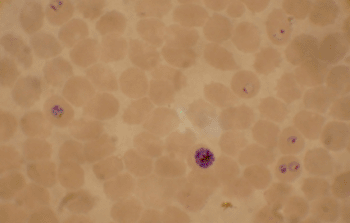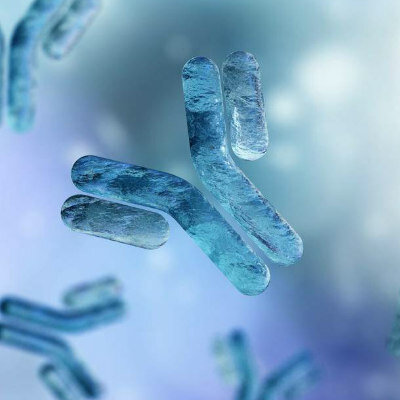New Generation of Malaria Drugs Block Myristoylation in the Parasite
By LabMedica International staff writers
Posted on 02 Jan 2014
Researchers have identified the enzyme N-myristoyltransferase (NMT) as a target for a new generation of drugs to be used for the treatment of malaria.Posted on 02 Jan 2014
Investigators from several research institutions in the United Kingdom taking part in a five-year project funded by the British Councils for Medical Research, Engineering and Physical Sciences Research, and Biotechnology and Biological Sciences Research recently described an integrated chemical biology approach that they had used to explore protein myristoylation in the major human malaria parasite Plasmodium falciparum.

Image: Blood smear from a P. falciparum culture. Several red blood cells show ring stages inside them, while close to the center there is a schizont and on the left a trophozoite (Photo courtesy of Wikimedia Commons).
N-myristoylation is a cellular process in which a myristoyl group (derived from myristic acid) is covalently attached via an amide bond to the alpha-amino group of an N-terminal amino acid of a nascent polypeptide. This modification ensures the proper function and intracellular trafficking of certain proteins. Many proteins involved in a wide variety of signaling, including cellular transformation and oncogenesis, are myristoylated.
The investigators reported in the December 22, 2013, online edition of the journal Nature Chemistry that NMT was an essential and chemically tractable target in malaria parasites both in vitro and in vivo, and that selective inhibition of N-myristoylation led to catastrophic and irreversible failure to assemble the inner membrane complex, a critical subcellular organelle in the parasite life cycle.
Senior author Dr. Edward W. Tate, professor of chemistry at Imperial College London (United Kingdom), said, "Finding an enzyme that can be targeted effectively in malaria can be a big challenge. Here, we have shown not only why NMT is essential for a wide range of important processes in the parasite, but also that we can design molecules that stop it from working during infection. It has so many functions that we think blocking it could be effective at preventing long-term disease and transmission, in addition to treating acute malaria. We expect it to work not just on Plasmodium falciparum, the most common malaria parasite, but the other species as well. We need to do some more work in the lab to find the best candidate molecule to take into clinical trials, but hopefully we will be ready to do that within a few years."
Related Links:
Imperial College London














